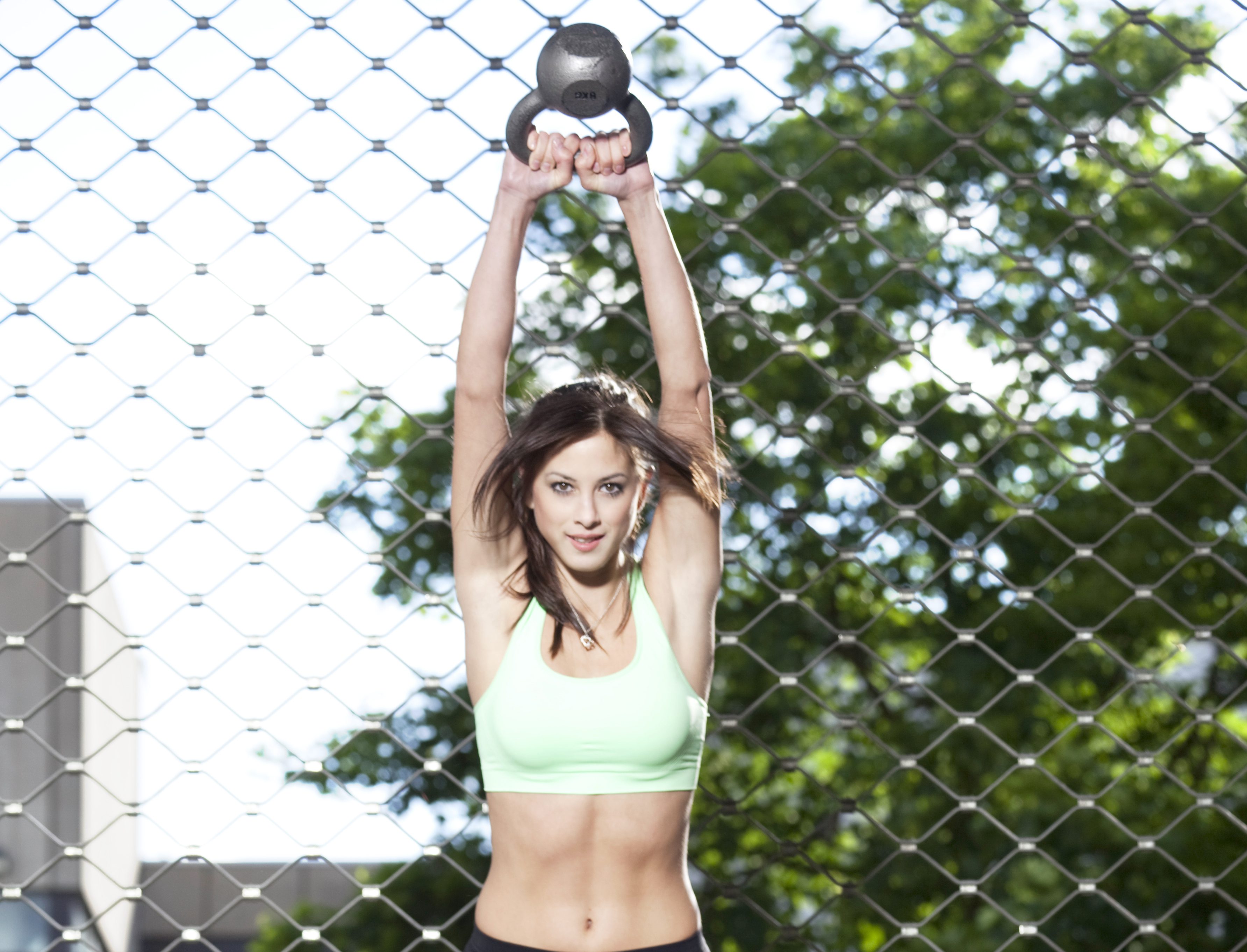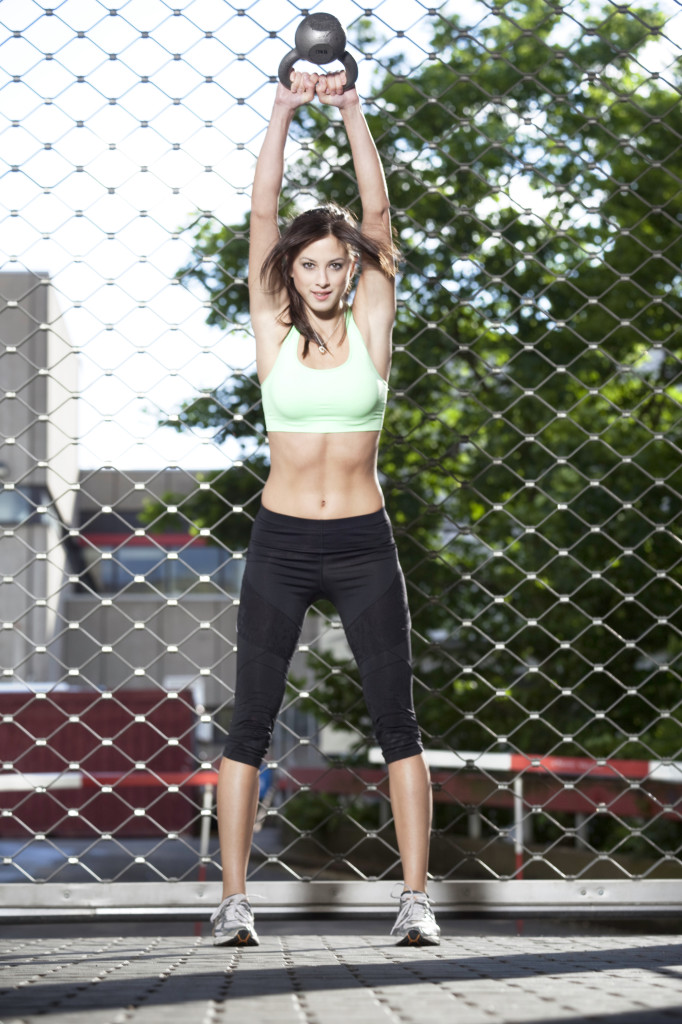Strength Without Size

Lifting weights will make you a faster, stronger distance runner. But how do you avoid bulking up?
Why Lift?
To achieve the best version of your running self, you’re going to have to do more than just run. Even though running and weightlifting are on opposite ends of the intensity spectrum, adding strength training to a pre-existing endurance program is actually very beneficial for the endurance athlete. An article in the Scandinavian Journal of Medicine and Science in Sports concluded that high-volume, heavy-resistance strength training added to the endurance program of highly trained endurance athletes led to an enhanced endurance capacity of short (less than 15 minutes) and long (greater than 30 minutes) durations.
A major component of running fast relates to how much relative strength you have, in other words, how much strength you have relative to your body weight. For example, if two runners both weigh 150 lb. and one can deadlift 135 lb. and the other 205 lb., the second runner is said to have more relative strength compared to the first runner. This stronger runner is probably more resilient to injury and can develop more power. Being stronger translates to a better ability to apply force into the ground when running. This runner is likely to run with more efficiency because they’ll be using a lower percentage of his total strength output.
Lifting for Size
Just as a heavy car uses more fuel, so will you when you run if you carry too much fat, muscle or wear heavy clothes or shoes. According to an article in the Journal of Strength and Conditioning Research, muscle hypertrophy can result from lifting weights if the program caters to these three factors:
1. Creating lots of mechanical tension within a muscle.
2. Creating an optimal amount of muscle damage.
3. Results in high levels of metabolic stress. Obviously, other factors are also important in building muscle such as frequency of training, the number of sets used per exercise and complementary nutritional strategies. But with a proper program a runner can successfully build strength without size.
Lifting for Strength
We associate larger muscles with more strength. This is very true but it’s not the complete picture, as strength is not solely a property of muscle, but also of the nervous system. Focusing your weightlifting on targeting the nervous system will result in several favourable adaptations: • Enhanced neural co-ordination during the recruitment of muscle fibres.
• Enhanced motor unit firing frequency.
• Favourable recruitment of fast-twitch (high threshold motor units) muscle fibres.
• Improved inter-muscular coordination.
• Better co-ordination of muscle synergist activation.
Lifting weights and strength training is a skill. Similar to other skills, the more you can practice, the better you get at performing the skill. Look at strength training as skill development for getting stronger. It will result in improvements in movement co-ordination, relative strength and overall athletic potential. Incorporate these seven tips to maximize your strength development while minimizing the bulk.
- Incorporate near maximal lifting Lifting heavy weight (>90 per cent of your maximum) will improve strength by recruiting what are called high threshold motor units. The muscle fibres associated with these motor units have the most potential for increasing strength. Maximal lifting is best applied to multi-joint exercises, such as squat and deadlift variations. Even though the weight is heavy, your intent should be to move the weight as fast as possible. This will ensure you’re recruiting as many fast twitch muscle fibres as possible. But use caution and ensure proper lifting mechanics and use appropriate spotting techniques.
- Incorporate explosive lifting/throwing Speed lifts, such as Olympic lifting variations, kettlebell swings and medicine ball throws are an excellent lifting style to teach acceleration and power development. Loads around 60 to 80 per cent of your maximum should be used and moved as fast as possible. Focus on sets of three to five repetitions.
- Incorporate plyometric training Otherwise known as jump training, plyometric training involves hop- and jump-type exercises which train and develop the stretch shortening cycling. The stretch-shortening cycling teaches the body to better utilize stored elastic energy to produce stronger and more forceful contractions. This improvement in reactive ability can also be explained by improvements in muscletendon stiffness. Bodyweight or weighted plyometric exercises can be utilized such as consecutive body weight jumps over hurdles or continuous dumbbell jump squats.
- Cut down the volume Lowering the volume and focusing on bar speed will have a better training effect for improving strength and explosive power rather than muscle growth. Also, an appropriate strength training workout frequency for runners tends to be one to three times a week depending on the time of year.
- Rest longer between sets When bodybuilding or training for muscle growth, short rest periods are recommended between sets, such as 30 to 60 seconds. When training for strength, increase your rest to two to five minutes depending on the exercise. The loads lifted will require longer rest periods to ensure you complete the same number of reps in the subsequent sets.
- Stand on stable ground Strength training shouldn’t be a circus act. A picture of someone squatting on an exercise ball seems to surface on social media from time to time. Lately, it has been trendy to stand on unstable surfaces to activate more core muscles, while weightlifting. This type of training is best left in the rehab realm. It reduces the load you can use and the amount of force you’re able to produce. Full body co-ordination takes precedence, which reduces the training effect for increasing strength. For the best strength and power training results, stand on stable ground.
- Don’t perform static stretching prior to your workouts Traditionally, we were told to static stretch prior to working out to increase our flexibility, which was thought to reduce our injury risk. The current recommendations suggest that dynamic exercises are better for preparing you for your exercise session or competition. Static stretching has been shown to negatively influence strength and power production, speed, jump performance and agility. To better prepare you for your strength and plyometric training-type workouts, save your static stretching for after the session.
Jon-Erik Kawamoto, CSCS, CEP is a strength and conditioning
specialist in St. John’s, N.L. who specializes in strength training
runners. Find out more at StrongerRunner.com.



